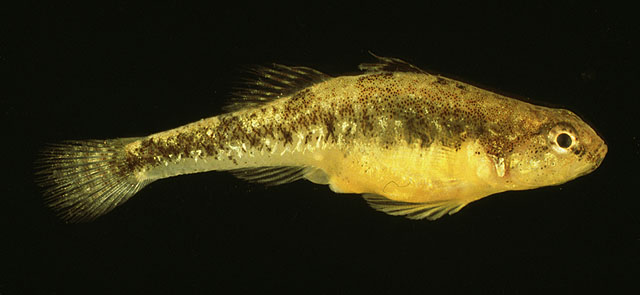| Gobiidae (Gobies), subfamily: Gobionellinae |
| 7 cm TL (male/unsexed) |
|
demersal; freshwater; brackish |
| Europe: Italian, Slovenian and Croatian coast of Adriatic and Ionian seas; recorded southward to Basilicate (Italy), but record from Evinos estuary (Greece) needs confirmation. Introduced to Lake Trasimeno (central Italy) and few localities of Tyrrhenian slope (Ref. 59043). Reported from Albania (Ref. 12290), Montenegro (Ref. 75974) and Bosnia and Herzegovina (Ref. 95371). |
|
This species is distinguished from its congeners by the following characters: no posterior oculoscapular canal; anterior extremity of anterior oculoscapular canal in front of middle of eye; body of live breeding males with dark spots or bars; back unscaled in front of ray 4-8 of second dorsal; total scales in midlateral series 32-39 (Ref. 59043). |
| A short-lived species (less than 2 years) which inhabits shallow, well vegetated habitats - streams, lakes, estuaries, lagoons, lower reaches of rivers, springs and brooks. Feeds on invertebrates. Spawns after first winter in April-August.; females may spawn every 10-15 days during the season. Males defend eggs in cavities under stones, plant material or shells; may overturn and clean suitable shells for spawning and these are then covered with substrate. Postlarvae are pelagic (Ref. 59043). |
|
Least Concern (LC); Date assessed: 05 March 2010 Ref. (130435)
|
| harmless |
Source and more info: www.fishbase.org. For personal, classroom, and other internal use only. Not for publication.

